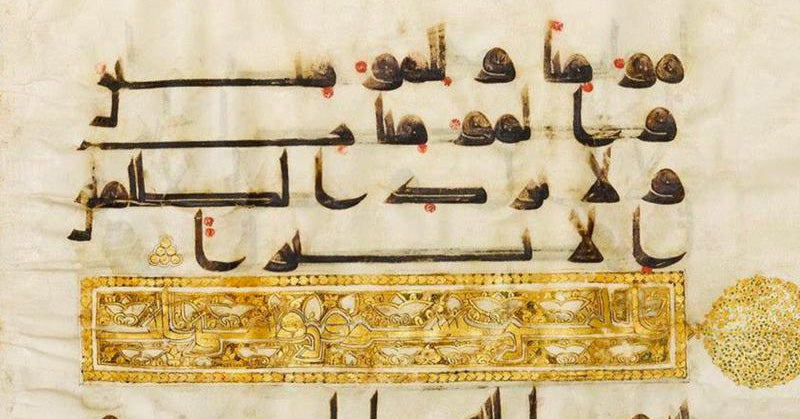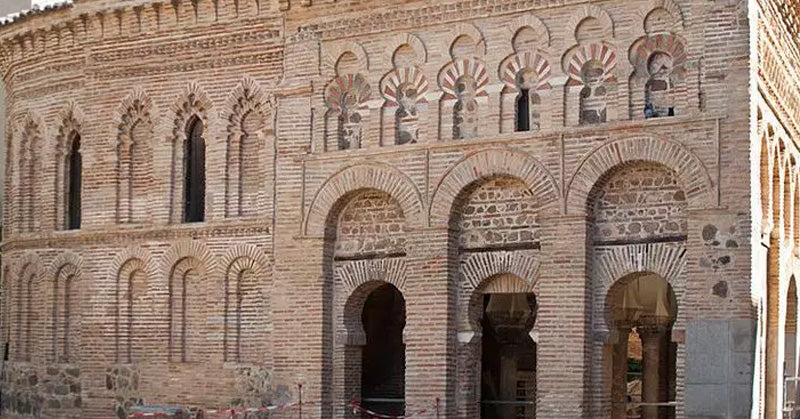Article: Islamic art: characteristics, works, architecture and mosaics
Islamic art: characteristics, works, architecture and mosaics
At the beginning, Islam had its presence in the Iberian Peninsula between 711 and 1492, Andalusia being the last bastion of the Muslim Empire in Spain. For this reason, the monuments considered to be the most relevant of Islamic art are located within the Andalusian territory.
When speaking of Islamic art in Spain, it is possible to observe that the most outstanding architectural works are located in the territories of Granada, Cordoba and some Andalusian provinces, which are adjacent to each other and which were once under Muslim rule during the different periods of the Middle Ages.

What is Islamic art and its characteristics?
Islamic art is defined as a current of artistic order developed in its generality by all those people who practice the Islamic religion. Like all figures related to art, it has a long history in time and in everything related to geography worldwide.
Islamic art, due to its expansion, always had a very strong component of union, this is explained by the fact that even though Muslim artists were always in constant movement, Islamic writing became common to all of them.
This preponderant factor caused Islamic art to evolve in a very cohesive manner, which meant that it kept intact the values of geometry and decoration. In addition, Islamic art has a presumption of geographic and temporal homogeneity, a factor that is not common in art.
In view of this, it is easy to distinguish three types of Islamic art, which we will now list:



Another outstanding feature of Islamic art was its architecture, and it is that at the time, buildings were created that subsequently had a function, whether it was of a religious order or not. Among this Islamic art, mosques have stood out.
It is also important to note that there was no artistic current within Islamic sculpture. However, within many types of architecture, there were often carvings in ivory or ceramics.
The same was true of painting, which generally predominated in almost all representations of secular and divine books.
All these characteristics led to Islamic art becoming predominant as the art of any culture, which allowed it to evolve over time from a great variety of sources, despite the close contact between Islamic culture and other cultures, such as, for example, Roman, Byzantine, Paleochristian, Persian art or all the styles of central Asia.
In them there were Turkish and Mongol incursions, where Chinese art stood out, which allowed them to shape and mold Islamic art in its architecture, painting and sculpture.
When did Islamic art begin?
The origin in time corresponding to the Islamic art is located in the year 622, which is considered the year of the birth of the Muslim religion that, according to history, occurs when Mohammed goes from Mecca to Medina, due to the intransigence that existed with respect to his preaching and, in this way, when the Islamic religion was born, its art was generated practically instantaneously.
Regarding the geographical origin, it can be pointed out that there is no specific point, but it is said that it was in the Bay of Bengal, where it originated, managing to expand to the Middle East, northern India, Africa and Spain.
Features of Islamic art
All types of art stand out for their multiple characteristics, which are influenced by various factors, such as religion, geography and other cultures that somehow marked its development.
Because of this, Islamic art has a series of characteristics that differentiate and distinguish it from the rest of the arts, among these are:



Another outstanding characteristic is that they used toabsorb elements from the culturesthey frequently conquered, such as the Visigothic arch and the Byzantine dome. They used to recycle the art of other cultures, since they built their buildings on the basis of the previous ones.Another characteristic to highlight is that they usedgeometric compositionsin order to avoid any type of representation of humanity.It should be noted that the techniques of greatest use in Islamic art are generally the mosaic of Byzantine tradition, stucco, relief sculpture and tiling.Finally, the composition in Islamic art is based on therepetition of some geometric schemes,whose form is serial, in addition to the composition formed by different decorations and symmetries.
Islamic art works and architecture
Among the monuments belonging to Islamic art found in Spain are the following:





Torre del oro from Seville, photo from España Guide.
All these monuments of Islamic art in Spain have had the good fortune to be joined by innumerable towers, walls and buildings, linked to Muslim art and which, at present, still remain in the different Spanish cities.
That is why, establishing the difference with other types of art, such as African art, Asian art or any other type of artistic current, there is no possibility of getting Islamic art in some exhibitions in Madrid, nor in other cities.
Therefore, the only thing left is the enjoyment of the landscape where Islamic art manages to merge with Spanish cities. Knowing that the Islamic culture was able to enrich the architecture of the Iberian Peninsula in a decisive way.
Before this, a consideration of strong impact was that the Muslim culture in Spain, arose from the creation of numerous irrigation ditches and numerous irrigation systems or through the canalizations of the water that, at present, still maintain their use within a great quantity of Spanish localities.
Muslim art
Muslim art tends to represent inanimate nature, which leads to a predilection for fantasies with a naturalistic background, which has a geometric character that emerges as a complement to architecture and the repetition of abstract forms.
In this type of art the presence of polygons is frequent, as well as regular or stellated polyhedrons. The Muslims were great builders, among their architectural art are the palace, the fort and the tomb, as well as less laborious buildings such as fountains, domestic architecture and public baths.
His painting was always closely linked to the knowledge of mathematics, since all the geometric motifs of his ornamentation were extracted from a polygonal formula. At the time, the geometric figures were transformed into numbers that through repetition came to determine cadences.
Major works
Among the main Islamic works considered of exceptional character are the following:




Characteristics
Similar to any current of culture and art, the Muslim religion and Islamic Art has some very unique characteristics, which fully identify it.
Among these characteristics, the following stand out:
This type of art has its origin in Byzantine, Paleochristian and Roman art, since these were the artistic modalities that came to precede it.For the Muslim religion, decoration, geometry and engravings constitute artistic elements very inherent to this kind of art.Among its most frequent artistic techniques are stucco, tiling, relief structure and Byzantine mosaic.Among the materials most commonly selected for its development are brick, tiles, plaster and wood.This type of art is iconoclastic, which means that the representation of God in images is forbidden.
Islamic Art Decoration
Regarding the decoration of Islamic art, it should be noted that much of what makes it up from the ornamental point of view comes from inheritance. Muslim artists focused on creating a new way of expression and, for this, they used 4 basic elements: vegetal motifs, calligraphy, figurative and geometric.
These form a profuse decoration characterized by horror vacui. The decorative elements of greatest use in this type of art were plaster and plaster, as well as masonry and brick. The Islamic builder initially chose the square as an organizing element of space that, later, select the cubic sphere to proceed to the development of the domes.
Moroccan Mosaic Tiles
For its part, this type of culture has a rich aesthetic in everything related to multicolored ornaments, textures and reliefs, which is the reason why it has managed to maintain over the centuries with the ability to cover any space, giving it a personality and a very unique identity.
The Arab mosaic is a unique proof due to its architectural forms and its diversity of compositions, capable of enhancing any environment where they are placed.

Their universality is of such magnitude that these fantastic mosaics have been called "advanced decagonal quasi-crystalline geometrics", a criterion maintained by Harvard and Princeton University, because their symmetry has perfect motifs dating back to the Islamic civilization.
Those who stood out in the commissions of the composition of the mosaics were the mathematicians, since they constituted a figure that maintained a position of great rank within the Arab culture.
It is said that they used rulers and compasses to elaborate the patterns that were later applied to the tiles. These patterns were called girih and were composed of a set of 5 polygons, a pentagon, a decagon, a hexagon, a diamond and a "tie".
Each motif was developed individually, but when the reproduction was presented on a large scale, it managed to form some geometric distortions.
For his part, Roger Penrose, a very famous British mathematician, managed to demonstrate that thick and thin tiles that were diamond-shaped, could form a non-repeating pattern with a rotational symmetry, which meant that you could rotate it less than 360° within a fixed point, maintaining the vision of its shape before starting to rotate it.
The structure of the mosaic, closely related to quasicrystals, was the reason for Daniel Shechtan to be awarded the Nobel Prize in Chemistry in 2001, since he was the discoverer of quasicrystals, defined as patterns of atoms that at first were thought impossible and that he defined as "the fascinating mosaics of the Islamic world reproduced at the level of atoms and never repeated".
